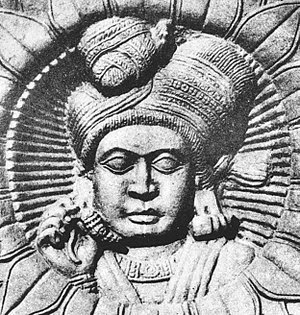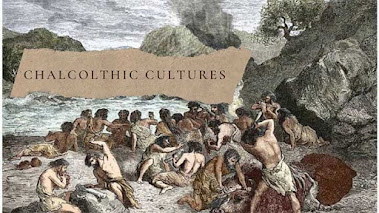The Satavahana Kingdom
Satavahana (229 BC - 220 AD)
Introduction:
The Satavahanas, also referred to as the
Andhras in the Puranas, were an ancient Indian dynasty based in the Deccan
region. Most modern scholars believe that the Satavahana rule began in the late
second century BCE and lasted until the early third century CE, although some
assign the beginning of their rule to as early as the 3rd century BCE based on
the Puranas, but uncorroborated by archaeological evidence. The Satavahana
kingdom mainly comprised the present-day Andhra Pradesh, Telangana, and
Maharashtra. At different times, their rule extended to parts of modern
Gujarat, Madhya Pradesh, and Karnataka. The dynasty had different capital
cities at different times, including Pratishthana and Amaravati.
The Sunga dynasty came to an
end around 73 BCE when their ruler Devabhuti was killed by Vasudeva Kanva. The
Kanva dynasty then ruled over Magadha for about 45 years. Around this time,
another powerful dynasty, the Satavahanas came to power in the Deccan area.
The term “Satavahana” originated from the
Prakrit which means "driven by seven" which is an implication of the Sun God’s
chariot that is driven by seven horses as per Hindu mythology.
The first
king of the Satavahana dynasty was Simuka.
They were the first local Indian rulers
to give their coins with the representations of the rulers. This training was
begun by Gautamiputra Satakarni who got the training from the Western Satraps
after vanquishing them. The coin legends were in the Prakrit language. Some
converse coin legends are in Telugu, Tamil, and Kannada. They patronized
Prakrit more than Sanskrit. They upheld both Buddhism and Hinduism. They
effectively shielded their regions against unfamiliar intruders and had many
on-going fights with the Sakas (Western Satraps).
Significant Rulers of the Satavahana Tradition
Satakarni I (70-60 BC)
·
He was the third of the
Satavahana kings and was the first powerful Satavahana ruler.
· His
name is inscribed on one of the gateways of Sanchi Stupa.
·
His achievements in details
are describes in the Nanaghat inscription.
Gautamiputra Shatakarni
Satavahana power was revived by Gautamiputra Shatakarni
(reigned c. 106–130 CE),
the greatest ruler of the family. His conquests ranged over a vast territorial
expanse stretching from Rajasthan in the northwest to Andhra in the southeast
and from Gujarat in the west to Kalinga in the east.
It is known from his inscriptions that the empire of Gautamiputra Satakarni included such territories as Asmaka in the Godavari basin, Suratha or modern Kathiawad, Aparanta or northern Konkan, the land of Anupa on the bank of river Narmada, Vidarbha or modern Berar, Akara or Eastern Malwa, and Avanti or Western Malwa. It is thus estimated that the territory of Gautamiputra extended from Kathiawad in the north to the river Krishna in the south, and from Konkan in the west to Berar in the east.
Gautamiputra
Satakarni was a patron of Hinduism. On the whole, during his liberal
monarchy, the subjects lived in peace and enjoyed prosperity.
Administration :
The
system of administration was monarchical. The king himself was the commander of
his force. the Satavahana rulers did not believe in divine rights
of a king and they carried administration in accordance with the directives of
the Dharma Shastras and the social customs..
He sought advice from his council of ministers to carry out his administration
efficiently. The administration was feudal. The whole kingdom was divided into
provinces, districts and villages.
There were three grades
of feudatories – the ‘Raja’, the ‘Mahabhoja’ and the ‘Maharathi or ‘Senapati”.
The ‘Raja’ belonged to the highest grade. He had the right to impose taxes and
to strike coins. The kingdom was divided into provinces and ‘Janapadas’ for
administrative efficiency.
The highest official in
a province was ‘Amatya’ or minister. His office was not hereditary. Men of
proven ability were appointed to this official. Each unit had several villages.
A village was administered by a ‘Gramika’. There we several officials to help
the king. Out of them, the most important were ‘Senapati, ‘Mahabhoja’,
‘Koshadhyaksha’, ‘Rajadoot, ‘Amatya’ etc.
Architecture during Satavahanas:
The Satavahana rulers took interest in building caves, viharas or monasteries, chaityas or large halls with a number of columns and stupas. Most of the rock caves in the Deccan were cut during this period. These caves were big and beautiful. The caves, monasteries, chaityas and stupas of Orissa, Nasik, Karle and Bhuj are fine specimen of contemporary architecture and decoration. UNESCO World Heritage Site Ajanta Caves were made under The Patronage Of Satavahana Dynasty. They build the cave number 9, 10, 12, 13 and 15A in Ajanta caves.
Chaitya was a large hall with a number of columns. The Vihara had a central Hall. One could enter this hall by a doorway from a varandah in front. The Chaitya of Karle was most famous. It is 40 metres long, 15 metres wide and 15 metres high. It has rows of 15 columns on each side. Each of these columns is built on a stair like square plinth. Each pillar has a capital figure of an elephant, a horse or a rider on the top. The roof-tops are also decorated with elegant carvings. The viharas were meant as places of residence for the monks. At Nasik, there are three viharas carrying the inscriptions of Gautmiputra and Nahapana. The most famous of these monuments are the stupas. Among them the Amravati Stupa and the Nagarjunakonda Stupa are most famous.
-By Shreyas Nikam (SY Metallurgy)
References:
https://byjus.com/free-ias-prep/ncert-notes-post-mauryan-india-satavahanas/
https://artsandculture.google.com/entity/satavahana-dynasty/m05336j?hl=en
Image references:
https://upload.wikimedia.org/wikipedia/commons/2/25/India_in_50_bc.jpg
https://upload.wikimedia.org/wikipedia/commons/4/41/Coin_of_Gautamiputra_Sri_Yajna_Satakarni.jpg
NOTE :-
This blog is meant for Educational Purpose only .We do not own any Copyrights related to images and information , all the rights goes to their respective owners . The soul purpose of this blog is to Educate, Inspire, Empower and to create awareness in the viewers. The usage is non-commercial(Not For Profit) and we do not make any money from it.
FOLLOW US ON:-
INSTAGRAM :
https://bit.ly/coep_blogs_insta
LINKEDIN:
https://bit.ly/coep_blogs_linkedIn
YOUTUBE:-
https://bit.ly/Coep_blogs_YouTube





Comments
Post a Comment